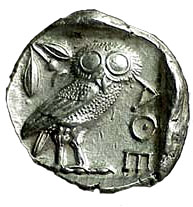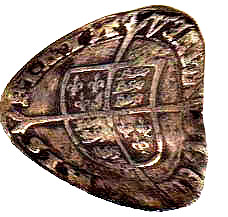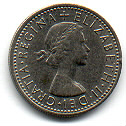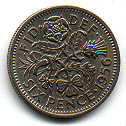The first poem written in western literature about the coins:
Lauritic owls will never leave you,
but will dwell with in and will nest in
your purses and hatch out small change.
- ARISTOPHANES (448-385 BCE)
in 'BIRDS'

Tetradrachm of Athens c.450 BCE.
(These coins were called Lauritic owls because the silver to make these
coins came from mines of Laurion ouside Athens)
-------------
---------------------------------
--------------
Bowed money: A bent coin, given as a pledge of love came from:
" Taking forth a bowed groat
and
an old penny bowed he gave it (sic) her".
-- Coney catching (Time, Elizabeth)

Groat
Queen Elizabeth I
-------------
---------------------------------
--------------
The traditional English poetic advice to the bride:
"Something old,
Something new,
Something borrowed,
Something blue,
And a sixpence in her shoe.


Six pence
Queen Elizabeth II
-------------
---------------------------------
--------------
"Money makes the world to go" might have originated from an old poem
Money will make the mare to go
" 'Will you lend me your mare
to
go a mile?'
'No, she is lame leaping over a
stile.'
'But if you will her to me spare,
You shall have money for your
mare.'
'Oh, ho! say you so?
Money will make the mare to go.'"
-- Old Glee and Catches
-------------
---------------------------------
--------------
Why is a coin round ?
The
earliest known specimens of the coins were made of electrum ( an alloy
of gold and silver). They were made in the kingdom of Lydia (western
part
of present day Turkey) around 700 BCE; probably to transform trade from
a cumbersome barter system to a monetary system.1
Others speculate that they were stuck as offerings to the Gods in their
religious ceremonies. Lydia was on a caravan
route
from Greece through India to China. Coins were also thought to be
independently invented in China and India too (for detailed discussion
see Invention of coins).
The early coins were of different shapes - round, square, oblong, spade
like and knife-like. Among the early civilizations, gold, silver and
bronze
coins were the units of value for the exchange of goods and services.
The
same coins were going round the centers of trade on the caravan route.
This observation made the Chinese traders to say that the coins meant
to
roll around the world should themselves be round.2
Thus, the 6th and 5th century BCE spade like chinese bronze coins
were replaced by round bronze coins in the later centuries. Thus de
facto
shape of the coin became round, but some of them are still struck in
various
shapes.
![]()
Why is it called a coin ?
The word "coin" was derived from the Latin word "cuneus" meaning wedge. A wedge shaped die was used to stamp small pieces of metal that were used as money. The word coin was applied to the stamped image on the money. Later, the word was used to denote the money itself.
and other money matters !
The word "money" was derived from "Juno Mone'ta"(Juno the Monitress/Admonisher) the patron goddess of the earliest roman mint. The Romans believed that the goddess Juno warns them of impending danger. Mone'ta in Latin means to warn. Shortly after the Gallic invasion, Lucius Furius built a temple to Juno Mone'ta on the spot where the house of Manilus Capitolinos stood on Capitoline Hill in the city of Rome. The coins minted at the near by mint were kept at the temple and the temple was subsequently converted into a mint and the "ases" (bronze coins) minted there were called moneta3
-------------
---------------------------------
--------------
The
word
"Capital" was derived from "Capita" meaning head of the cattle. Cattle
used to be the wealth of the people in nomadic communities and early
civilizations.
The oldest greek coins had an
impression
of ox on one side. In Roman times a bribe for silence was said to be an
"ox on the tongue"3.
( Now a days we call it "Lobbying the Congress" to
keep
them silent on matters of education, health care and welfare of
the
common man, woman and the child. :-)

-------------
---------------------------------
--------------
1. According to money : A history. by Jonathan Williams.
2. Money talks. N. N Pai. 1980.
3. Dictionary of Phrase and Fable. by E. Cobham Brewer. 1894 For other references See Bibliography